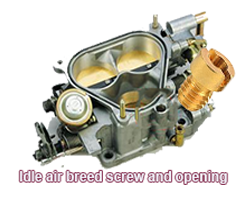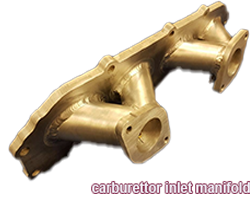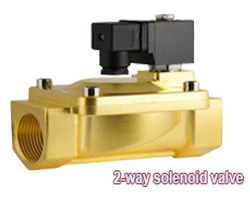
HIGH-RISE MANIFOLD:  Describes an intake manifold custom designed to mount the carburettor considerably higher above the engine than the standard to improve the angle at which the fuel is delivered.
Describes an intake manifold custom designed to mount the carburettor considerably higher above the engine than the standard to improve the angle at which the fuel is delivered.
IDLE AIR JET: Describes a hole in a fixed jet carburettor through which air is drawn into the idle system
IDLE AIR BLEED SCREW: Describes a screw found on some carburettors that allows air to enter when the throttle is closed, allowing the engine to idle while preventing the formation of deposits in the throttle area.
IDLE SPEED SCREW: Describes the screw located at the bottom of the carburettor, preventing the throttle from closing completely when the vehicle is idling through controlling the idle speed.
IDLE DISCHARGE HOLE: Describes a system used on a carburetted vehicle where the idle mixture enters the airstream flowing past the throttle plate by way of a circular opening.
INLET MANIFOLD: Describes the connecting tubes situated between the carburettor base and the port openings to the intake valve or intake ports that feed individual lines ( runners) leading to the respective intake ports. The purpose of the Inlet manifold is to transfer the air-fuel mixture to each cylinder.
INTERCOOLER: Describes a device whose role is to cool the air entering the carburettor, thus providing increased power and a better fuel economy.
JET: Describes a small precision-made insert, in most cases a brass fitting that is placed inside one of the passages of a carburettor to control the flow of liquids or fluids.
JET ADJUSTER: Describes a nut that regulates the air/fuel mixture's volume or strength in a variable-choke carburettor.
JET CARRIER: Describes the removable plug fitted in a carburettor containing the jet.
MAIN JET: Describes the primary fuel orifice in a carburettor through which most of the fuel flows.
MAIN MIXTURE DISCHARGE NOZZLE: Describes the jet through which air and fuel are fed into the carburettor barrel.
MAIN REGULATING SYSTEM: Describes a system where carburettor components are divided into the fuel intake control, the central regulating system, the idle system, and the staring aids to regulate the correct amounts of fuel and air to the carburettor
METERING JET: Describes a small opening used to control gasoline flow through various parts of the carburettor.
METERING ROD: Describes a thin, movable rod that varies the opening area's diameter in a carburettor jet.
METERING SIGNAL: Describes the vacuum signal generated by the pressure differential at the venturi with the metering signal's strength determining how much fuel is pulled from the primary circuit into the venturi.
MIXING CHAMBER:  Describes that part of a carburettor separated from the float chamber both in function and layout, where the air and the fuel combine as they meet.
Describes that part of a carburettor separated from the float chamber both in function and layout, where the air and the fuel combine as they meet.
MIXTURE CONTROL SOLENOID (M/C): Describes a device installed in the carburettor, whose role is to regulate the air/fuel ratio through the oscillation of the metering rods.


